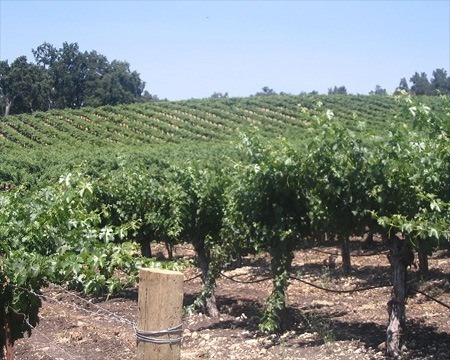Paso Robles' West Side Story
The west side of Paso Robles wine country is the kind of magical place where an unknown young winemaker can grow up to have his picture on the cover of Wine Spectator.
A few years ago, I met Justin Smith, just out of college, at his modest hilltop home overlooking his family's vineyard that had literally been planted with the aid of a jackhammer. While I was tasting Smith's Syrah and other Rhône-style wines, he showed me a whale jawbone that had been dug up when the vine roots were going into the ground. He called his winery Saxum and hoped he could find a market for his product.
A few weeks ago, there was Justin — toting a lug of fresh-picked grapes, smiling out from the Spectator cover, his 2007 vintage from that same vineyard having been named "wine of the year." And Smith has plenty of good company in the Central Coast wine region. Once a backwater, today Paso Robles' west side is hot.
And not just because the sun beats down on this jumble of oak-forested hills just over the mountains from the Pacific. No, the temperature is actually higher on the flat, east side of Paso where the sea of vines is marked only by an occasional tree as it stretches for miles along a gradual slope.
The west side is hot because of the Syrah, Grenache, and other Rhône reds whose DNA seems destined to make great wine here — an area formerly known for its intense Zinfandels.
Austin Hope and his family believed that when they began planting some Rhône varieties here over a decade ago to balance against the Cabernet Sauvignon they were growing on the east side to source their Liberty School brand. "No one was farming this land when my dad bought it," Hope said last summer as he toured the family's west side vineyard. "At first it was planted to Merlot, but we grafted it over to Grenache," he says. "We've also learned over the past few years how important getting the right rootstock is."
Hope is one of a dozen or so winemakers leading the Rhône ascendancy on the west side. He makes a delicious Austin Hope Syrah at a good price for the quality, and his Liberty School Cuvée — a red blend replacing the line's varietal Syrah — is a good value wine.
Other pioneers in the area include the Perrin family, owners of the Rhône Valley classic Château de Beaucastel from Châteauneuf-du-Pape. They paired up with wine importer Robert Haas to found Tablas Creek, one of the first high-end brands in the region. Then there is Stephan Asseo. After being trained in Burgundy, Asseo owned properties and consulted in Bordeaux before he decided he wanted to make different wines in a different place. After checking sites in several countries, he established L'Aventure winery on the west side and has won praise for his Rhône-style wines.
Not that the west side doesn't have its problems. The name "Syrah" for some reason doesn't send American hearts a-flutter, but consumers seem to love anything that is a Rhône blend. And red grapes seem to make much better wines here than whites, although Tablas Creek has made some excellent white ones.
And there seems to be little jealously of Justin Smith and Saxum's success among his fellow winemakers. After all, he has their front covered.
